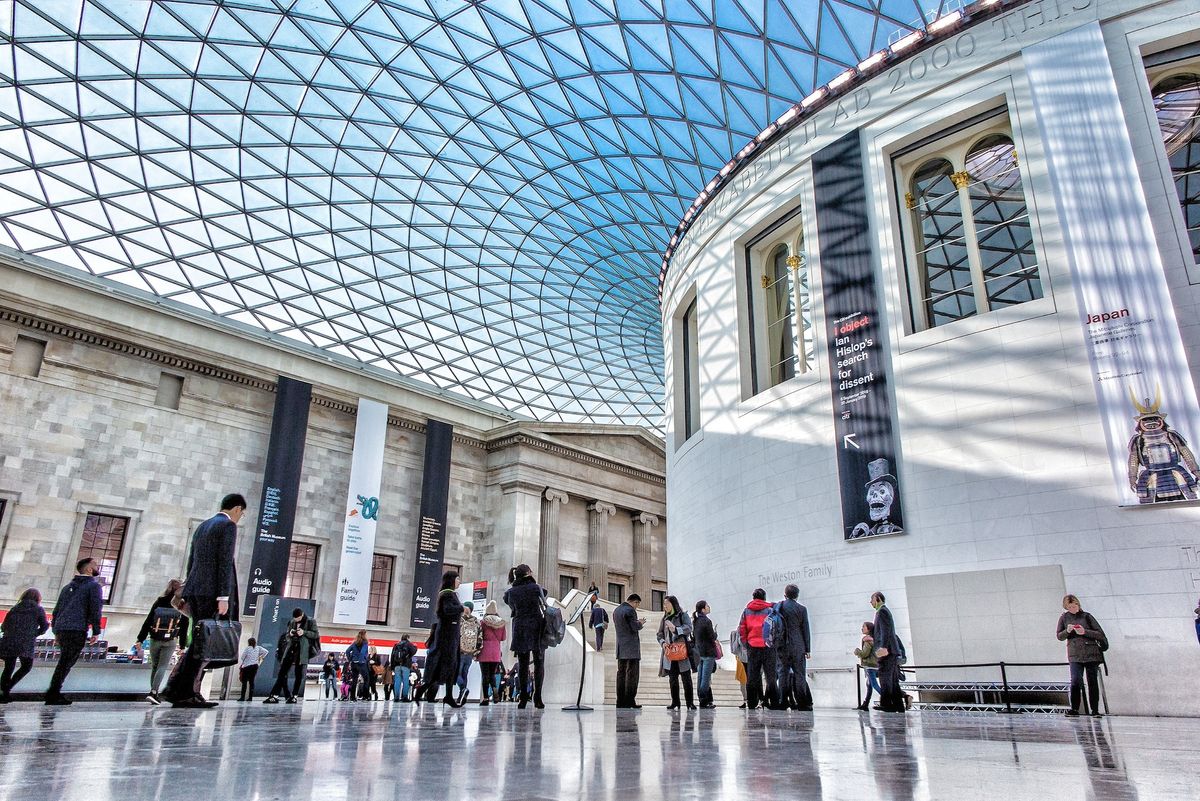The most challenging job in the art world is up for grabs—the directorship of the British Museum—with a salary of £215,841. But the successful applicant will need to rebuild the battered reputation of the oldest national public museum in the world, which was established by an act of Parliament in 1753.
The application pack for the director’s post—provided by the company Saxton Bampfylde Ltd which is acting as an employment agency advisor to the British Museum on the appointment—says that prospective applicants must lead a workforce of almost 1,000 people, overseeing “a positive culture change within the museum and lead a dynamic executive team”.
A raft of other responsibilities in the role include ensuring that the museum has “a pipeline of world-class programming, including research, exhibitions, displays and other means of public engagement with the collection” plus managing “risk appropriately within the museum”. The deadline for applications is 26 January.
Last year, the Bloomsbury institution faced a slew of problems including the disclosure that 2,000 antiquities were stolen or damaged over a period of more than 20 years (Hartwig Fischer, the previous director, resigned in August). In an online statement, the museum says it has since recovered 351 items and identified more than 300 other missing objects; a review published last month revealed serious problems with the institution’s governance and called for the director and trustees to introduce fundamental management reforms.
The museum also faces renewed calls to return the Parthenon Marbles to Greece in an ongoing restitution row that has still not been resolved. The fifth-century-BC statues have been housed in the British Museum since 1816 after they were removed from the Parthenon temple on the Acropolis in Athens by agents working for the Scottish nobleman Lord Elgin.
The Greek prime minister Kyriakos Mitsotakis put further pressure on the museum to return the Parthenon Marbles to Greece late last year; crucially the museum chair, George Osborne, has reiterated that “we can reach an agreement with Greece”.
Osborne outlines the institution’s plight in an introductory letter included in the application document, saying: “The British Museum has had a tough year. We have been under intense scrutiny following the discovery of thefts from our collection, and we are also at the centre of global conversations about the validity of so called ‘universal museums’.
“But as we turn into 2024 the museum is also feeling remarkably strong and ready for change: in the wake of the thefts, under the leadership of Sir Mark Jones, we embarked on a project to complete the digitisation of the collection. This is something no other museum of our size has yet achieved and will make our collection one of the most visited, most accessible and best researched in the world. We have also begun the next phase of the Masterplan—building a new energy centre and launching an architectural competition to redesign and redisplay a third of our gallery spaces.”
The first phase of the museum’s masterplan is complete, the document adds, with the construction of a new Archaeological Research Collection near Reading. The centre, known as BM_ARC, is due to open on 7 June and will “revolutionise” how the collection is studied and stored, according to the museum.
The next phase of the plan will see the construction of a new energy centre aimed at dramatically reducing the institution’s carbon footprint by saving 1,700 tonnes a year of carbon dioxide. The museum will also launch an international architectural competition in the spring, choosing architects to redesign around a third of the galleries housing antiquities from Egypt, Greece and Rome.
But the masterplan announcement also drew criticism following the news that oil giant BP will back the project, giving £50m over the next ten years towards the ambitious refurbishment plans.


